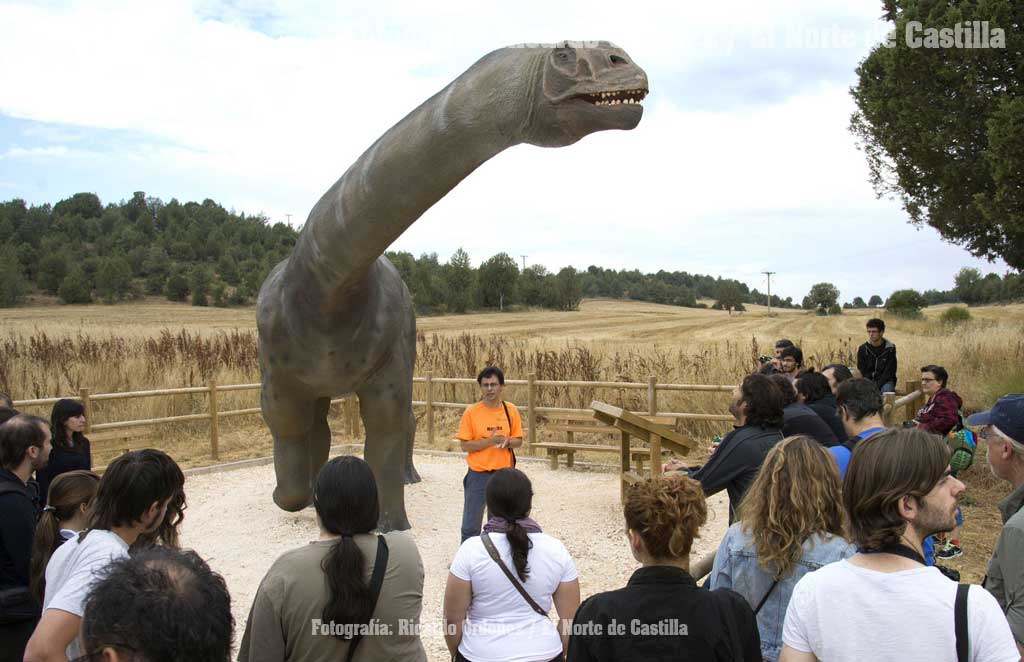In the present day region of Salas de los Infantes a broad valley took form 130 million years ago, centered around a river that frequently overflowed its banks in a subtropical climate. Giant ferns like the Tempskya bordered the water channels, creating a riverside forest. Further inland from the river, dense prairies of aquatic ferns such as Onychiopsis and Regnellites grew and flourished on the wet plains and around small lagoons. Giant conifer trees and the bennettitales plants, which resembled miniature palm trees, grew in the drier areas still further inland.
This colorful landscape was populated by a diverse assortment of dinosaurs: huge herbivores and small runners, armored species like the stegosaurus, fearsome carnivores like Baryonyx, and enormous sauropods; crocodiles, the Lepidotes fish, turtles, pterosaurs and lizards lived along with them. Now they are preserved in fossil form, together with other vestiges of their existence, such as eggs and tracks, in the Museo de Dinosaurios (Dinosaur Museum) of Salas de los Infantes, one of the most important collections in Spain.
This museum features some models of fossils found nowhere else in the world: the gigantic Demandasaurus darwini dinosaur, measuring 12 meters long, related to others from Africa and South America; Arcanosaurus ibericus, a lizard relative of the present-day Komodo Dragon, and the Larachelus morla turtle. These unique models and the diversity of species represented in the museum indicate the special importance of the Museo de Dinosaurios collection at the Salas de los Infantes.
The museum is complemented by a Sala de Arqueología (Archaeology Hall) featuring pieces from all the prehistoric and historic periods documented in the mountain region, enabling us to learn about the different groups of people and cultures who left their mark on this area.
At the site we can view the fossil tracks that protrude from the surface of the rock, and observe everything down to the details found of the animal's claws; quite surprising, as the dinosaur's foot appears to be supported by sand from 120 million years ago.










